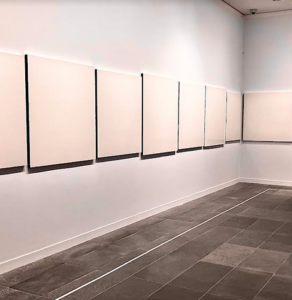
The “Robert Ryman. Act of Looking” exhibition at Paris’ Musée de l’Orangerie revisits the artist’s minimalist white on white paintings (until July 01, 2024). Quintessentially art for art’s sake, people either love or hate this kind of work. Ryman (1930-2019) is a self-taught American painter, who began working in New York in the late 1950’s. He spent most of his career exploring the foundations of painting. Returning to the formula of the white square time after time — which he chose for its neutrality— he explored all the material components of a painting from texture, to surface to lighting and hanging systems.
About his approach to painting Ryman explained (in 1974) “The first thing I did was find out how things worked. You find out what the paint does and how the brushes work and what’s going to happen when you put things together, and how colors react together, and composition.”
Having initially embarked on a career as a jazz saxophonist, Ryman spent nearly a decade as a security guard at the Museum of Modern Art in New York. There he discovered the modern European masters (Claude Monet, Paul Cèzanne, Henri Matisse) and the latest major names in America (Mark Rothko, Jackson Pollock, Barnett Newman) before deciding to dedicate himself (without attending art school) to painting. He is now considered one of America’s foremost abstract artists. One of his white paintings titled “Bridge” sold in 2015 at a Christie’s auction for $20.6.
Ryman experimented up to his final years exploring the infinite possibilities of the medium while creating endless variations. The exhibition at the Musée de l’Orangerie is a rare opportunity —on either side of the Atlantic— to see this American contemporary art master.
“Robert Ryman, Le regard en acte,” Paris. Musée de l’Orangerie (until July 01, 2024).

